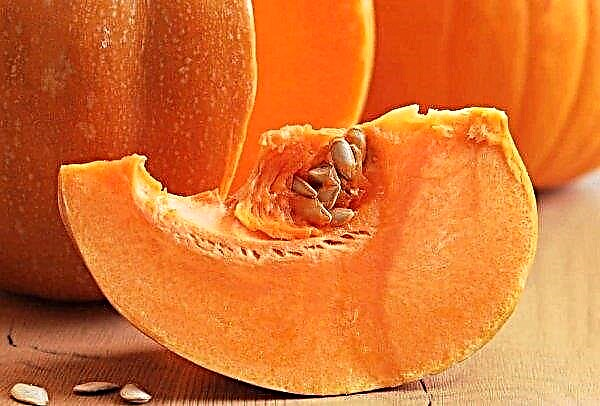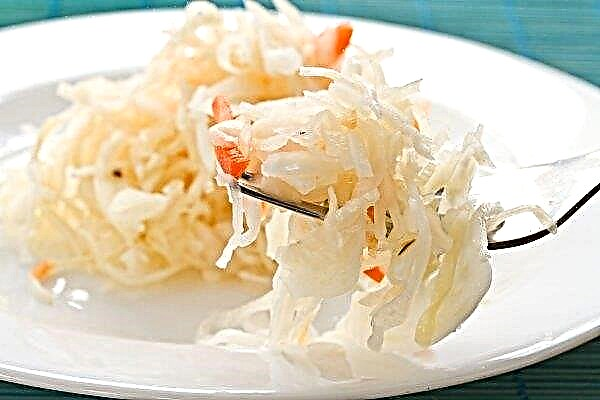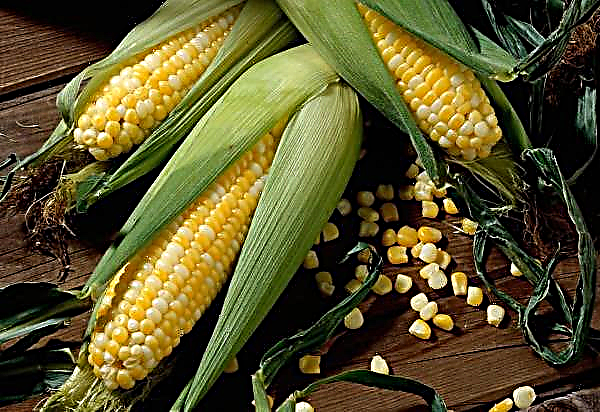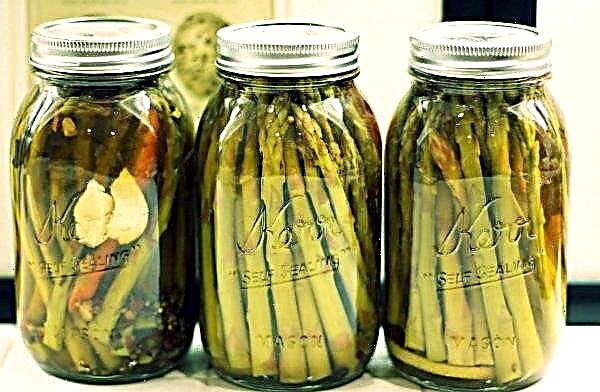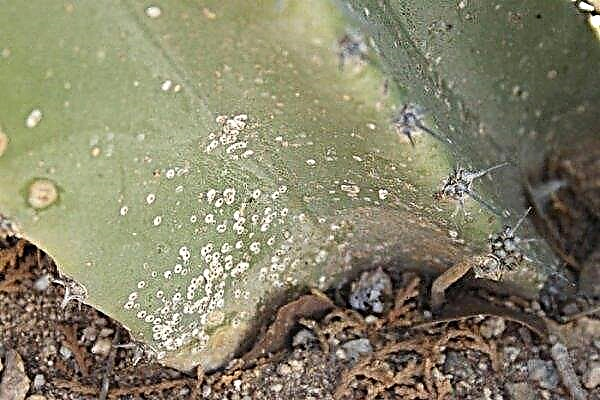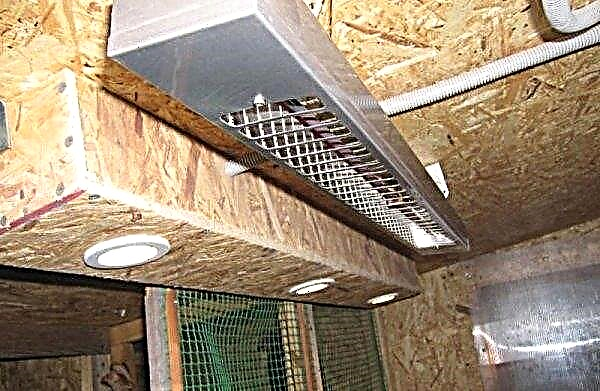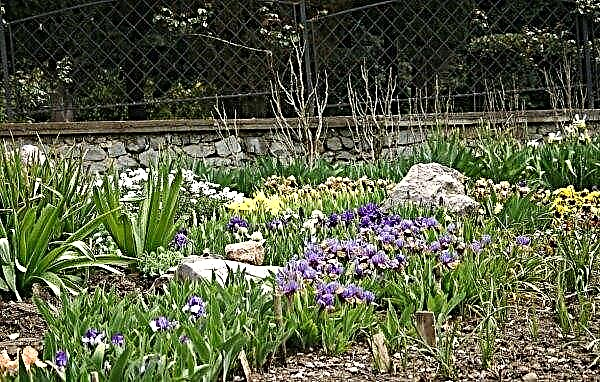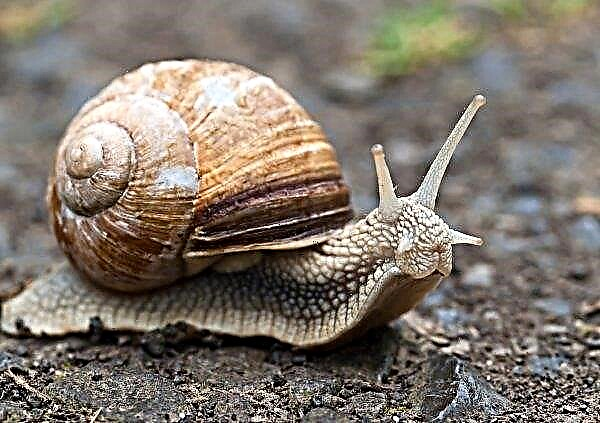Unusually colored, tasty and beautiful eggplant fruits quickly took root in our area, despite the complexity of cultivation. Even for an experienced gardener, growing eggplants can be a real test. However, it will be difficult only in the first year, since it will be necessary to study a lot of information, and then the desired experience will come. How to grow eggplant in greenhouse conditions, read on.
The best varieties for growing in a greenhouse
Before embarking on the cultivation of exotic blue fruits in your greenhouse, you must decide on the type of crop. The gardener should know that all eggplant varieties are divided into early ripe (those whose fruits can be enjoyed after 120 days), mid-ripe (blue vegetables ripening in 120-130 days) and mid-ripening (ripening in 130 days).
In order to have a good harvest, experienced gardeners advise growing hybrid varieties of crops in greenhouses. In addition, it is recommended (if the parameters of the greenhouse allow) to combine varieties with different ripening dates. This will not only provide the opportunity to enjoy fresh blue fruits throughout the season, but also allow you to choose the most suitable specimens for planting next year.
Important! In the open ground, it is better to plant early ripe subspecies, and in greenhouse conditions you can grow any.
A good harvest can be expected from the following varieties:
- Bagheera. Belongs to early and high-yielding varieties. The variety is distinguished by a compact bush, which makes it ideal for agricultural technology in a small greenhouse. The fruits of the culture are oval, have excellent taste characteristics, have a long storage term and are well transported.
Video: Eggplant varieties Bagira F1
- "Purple Miracle". One of the most popular varieties among summer residents. Its peculiarity is in the practical absence of bitterness of fruits. Also among the advantages is a stable immunity to attacks of diseases and pests.

- "Joker". The ripe fruits of the variety have a bright purple color and an elongated oval shape. Vegetables are collected in brushes of 4-6 pieces. The average height of the bushes is 1.3 m. The variety is classified as high-yielding - about 100 pieces of vegetables from one plant.
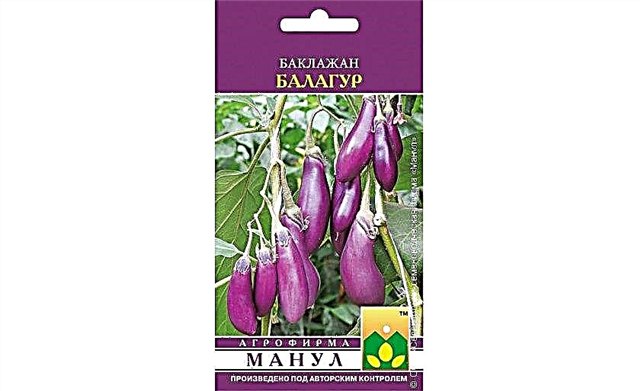
- "Black handsome". It has high productivity, good taste, delicate pulp. Vegetables are painted in dark purple and blue-black shades.

- "City". The variety belongs to the mid-season class. The growth of sprawling bushes reaches 3 m. Crops are stably high, fruits have a cylindrical shape. The main plus of Gorodovoy is that its flesh does not boil.

- Golden Egg. Most often, the hybrid form is used by summer residents for decorative purposes, due to its biological features: eggplant in the shape of an egg is painted white, which does not detract from their taste indices.

- Sancho Panza. If it were not for the blue color, the fruits of this varietal variety could be mistaken for tomatoes, because they have the form of tomatoes.

Greenhouse preparation
Everyone who is looking for an answer to the question “How to grow eggplant” should start with the first and main rule of agricultural technology: proper preparation of the greenhouse. It is necessary to begin the implementation of this paragraph in the fall. Initially, you need to remove everything that remains of the plants growing in the greenhouse.
If the greenhouse structure is wooden, then it is recommended to paint it with a solution of bleach, and if it is made of polycarbonate, it is simply treated with a solution. The solution itself is prepared in proportions of 400 g of lime per 10 liters of water.
Soil preparation is divided into autumn and spring.
- Autumn soil preparation consists in loosening and disinfection with a solution of vitriol from copper (2 tbsp. l. solution in 10 l of hot water).
- Spring preparation of soil - This is its alignment and fertilizer. Organic top dressing in the form of compost and manure must be added to the substrate. Since eggplants do not like acidic soils, it is necessary to reduce acidity by adding dolomite flour (2 tbsp. Per 1 meter of soil). The optimum acidity for the culture is 5.5–6.5 pH. Maintaining the level of moisture and friability of the soil necessary for the culture will help introduction of brown peat and sawdust into the substrate before planting; the earth is also fertilized with ash and calcium sulfate. After applying all the fertilizers, the soil is dug up.
Did you know? In Britain, the White Eggplant variety is popular, resembling chicken eggs in both shape and color.
Features of growing eggplant in a greenhouse
Growing blue vegetables in greenhouse conditions begins with planting seedlings.
Growing seedlings
This stage begins with sowing seeds. Of course, it is much easier to purchase ready-made seedlings in a specialized store - this will not take either time or effort. But it’s better to sow it yourself.
Acquired seeds of the required variety are sown in containers, the volume of which does not exceed 0.5 l, and the depth is not less than 7 cm. You can use glasses made from sour-milk products, scraps of plastic bottles. The best option is tablets or pots of peat. It is not recommended to sow the seed in containers or special boxes, since the seedlings of the culture do not tolerate diving.
The necessary substrate is sold in specialized stores, it is recognized by the mark "For seedlings." However, you can prepare the necessary soil with your own hands, especially since the ingredients are found in the garden of each summer resident, namely humus, peat or leaf soil, turf land (2/2/1). You can add some ash from wood. The substrate is pre-disinfected (three days before sowing) with a potassium permanganate solution (0.02 mg per 1 liter of water) or Previkur (10 ml per 6 liters of water).
Immediately before sowing, the substrate is well moistened, and the seeds themselves are placed to a depth of 5-10 mm. Then the containers with future seedlings are covered with a film and placed in a warm microclimate (+ 25 ° С). After 10-15 days, seedlings will appear.
Care for sprouts is moderate watering. If the soil is characterized by good fertility, then fertilizing seedlings before transplanting to a permanent place is not necessary.In the case of low soil fertility, seedlings need top dressing:
- First - 10-11 days after planting: 30 g of calcium nitrate is dissolved in 10 l of water.
- Second 3-4 days before disembarkation in the greenhouse: 25 g of superphosphate and 20 g of potassium sulphide are diluted in 10 l of water.

Rules for planting seedlings
According to the recommendations of experienced gardeners, it is necessary to plant eggplant seedlings in a greenhouse when its age reaches 2.5 months, that is, in 2-3 decades of May. The optimum soil temperature for transplanting eggplant into the greenhouse is + 15 ° C stably.
Important! The day before the transplant, the seedlings must be treated with an epin solution (0.2 ml per liter of water), this will help them overcome stress faster.
The landing procedure is as follows:
- The soil surface in the greenhouse is pre-leveled with a rake, earthen comas are broken.
- Digging holes for planting, the depth of which should be 2-3 cm greater than the length of the containers in which the seedlings grew, ideally 15 cm. The distance between the holes should be 30-40 cm, and between the rows - 60 cm.
- Each landing pit is moistened with 2 liters of warm water.
- The seedlings are gently pulled out of the container, and together with an earthen lump, which was poured plentifully the day before the transplant, they are placed in a hole.
- Then the landing pits are densely covered with soil, the surface of the substrate is mulched with dry peat, and watered again.
Video: Planting eggplant seedlings in a greenhouse
Greenhouse crop care
Each gardener who wants to grow eggplant begins with a question about how to care for them. There are no special requirements: the same watering, top dressing, bush formation, but taking into account the characteristics of the culture.
Top dressing
Fertilize eggplant three times:
- Two weeks after planting in the greenhouse, it is necessary to feed the plants with nitrogen fertilizers: 3 tbsp. Are dissolved in 10 liters of water. azofoski and watered with such a nutritious mixture each seedling, with the calculation of half a liter per unit.
- At the stage of fruit setting, fertilize with mullein infusion (1/10).
- The active formation of fruits requires a lot of energy from the plant, so it needs to be fed with complex fertilizers, such as "Kemir", "Mortar" (1.5 tbsp. Drug per bucket of water). You can also resort to the help of nitrogen-phosphorus substances: ammonium nitrate and superphosphate (1 part saltpeter and 1 tbsp superphosphate per bucket of water).
Important! Do not overdo it with organic top dressing, so as not to provoke an abundant increase in greenery, as a result of which crop yields will drop sharply. If you observe such a phenomenon, it is worth immediately resorting to potassium top dressing.
Watering
The optimal living conditions for the eggplant is moist soil, but not moist air, so you should carefully take care of the proper watering of the crop. The procedure is carried out by drip, strictly under the root. It is necessary to start from 5-6 days after planting in the greenhouse, and until the fruiting begins, moisten once every 7 days with warm (+ 20 ° C) standing water. When the bushes begin to bear fruit, the number of irrigation increases to two times a week. Watering time is morning.
Immediately after the plants have been watered, it is necessary to ventilate the greenhouse so that the humidity does not increase.
Pollination
Eggplant flowers are bisexual, therefore, they are characterized by a spontaneous pollination process. However, it is better to help the plant: during flowering, walk in the morning between rows and shake each bush slightly.
If you notice that after flowering the fruits are not tied, or only partially tied, you need to spray the plantings with “Bud” or “Ovary”.
Ventilation
Eggplant feels great at a temperature of + 26 ... + 28 ° C. If the thermometer rises higher, it can adversely affect the plants, so it is better to lower the temperature by ventilating the greenhouse, especially on hot days. It is also recommended to water paths between plants in order to lower the temperature (at the same time, make sure that the humidity does not rise).
The greenhouse is also aired after each watering, in order to prevent an increase in air humidity.
Important! In the process of ventilation, the greenhouse should be opened only on one side, so that there are no drafts inside that the culture is afraid of.
Bush formation
Eggplant bushes can be formed into one and several shoots:
- Single Stem Formation will provide an opportunity to save space and is especially relevant for tall varieties. By such a formation is meant to leave the strongest shoot, which is necessarily tied to a support. The support will be especially in demand during the fruiting period, when the stem can break under the load of the fruit. This formation is carried out 14 days after transplanting into the greenhouse, and it consists in removing the side shoots. Stepchildren that appear later are also removed.
- Formation in several stems. It is also carried out two weeks after transplantation. It consists in pruning all the shoots that are below the first branch, and forming 4-5 of the strongest shoots, followed by pinching the top (provided that the height of the bush reaches 30–35 cm).

Diseases and Pests
Eggplant can be affected by the following diseases, the fight against which should begin immediately after the detection of symptoms:
- Late blight. Fungal disease reveals itself in brown spots, which resembles rust. First, spots appear on the lower part of the stem, and quickly spreads throughout the bush, is transferred to the fruits. Procrastination with the treatment process leads to the death of the bush. Treatment of all plants (both sick and healthy) with a solution of copper sulfate (0.2%) or Bordeaux fluid (also 0.2%) will help to overcome the disease. An antiseptic in this case is the ash of wood, which must be sprinkled on the affected areas of the plant.

- Tobacco mosaic, the symptomatology of which is the loss of foliage color, or the appearance on it of green spots resembling a mosaic. The disease can deform the bush and lead to its death, if the fight does not start in a timely manner, which begins even at the stage of preparing the seeds for sowing. So, eggplant seed must be placed in a 20% hydrochloric acid solution and held for 30–40 minutes.
Another stage of prevention is spraying the bushes with a mixture of skim milk and laundry soap (20 g of soap per 1 liter of milk). Spray the culture every 10-15 days. But if the disease, despite the prevention, attacked the eggplant, then the only thing that can be done is to remove the damaged bush from the greenhouse and burn it.Did you know? In the USA, Canada and Australia, eggplants were given the name eggplant (egg vegetable), since the first eggplants brought there in the 18th century were rounded and white in color, resembling large eggs.
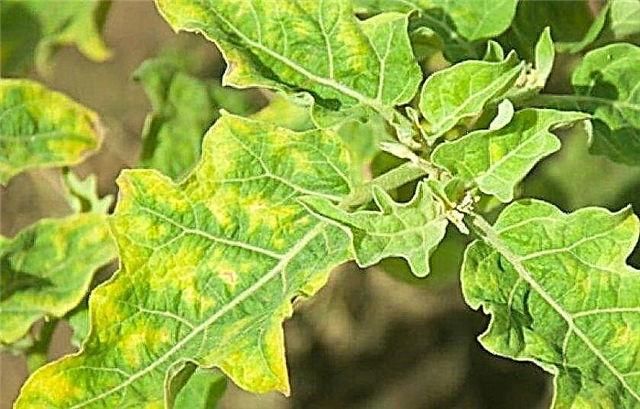
- Blacklegdamaging the root system of the plant and leading to wilting and early death of the bush. The cause of the appearance of the fungus that causes the disease is excessive soil moisture and dense planting. The medicine for the black leg is Trichodermin, a solution of which the diseased plant is watered and sprayed (the solution is prepared strictly according to the instructions). If the treatment did not help, the diseased bush must be removed until the fungi have spread to neighboring ones.

- Gray rot, the causative agent of which the culture can pick up from diseased soil, air. Also, the cause of the disease can be excessive moisture - both soil and air. Dark watery spots covering foliage, stems and fruits signal the appearance of the disease. The spots quickly increase and become covered with a gray coating. The fight is to remove the affected areas of the plant and treat wounds with wood ash, as well as moderate watering of bushes with warm water.

Pests that are dangerous for eggplant include:
- Spider mitewhose main food is the juice of the culture. In the process of feeding, the tick envelops the plant with cobwebs, which can soon lead to its death. Spraying “Fitoverm” (10 ml per 1 liter of water) will help drive the uninvited guest away. Spray twice, observing the interval of 3-7 days.

- Colorado potato beetle. A gluttonous insect quickly leaves leaves alone stems. A control measure is the manual collection of an adult beetle and the destruction of larvae.

- Aphids, against which Fitoverm is also effective (8 ml per 1 liter of water). The procedure, as in the case of the spider mite, is repeated after 3–7 days.

- Greenhouse Whitefly, the larva of which sucks the juices from the plant, which leads to the death of foliage. The treatment of garlic tincture will help to eliminate such an uninvited guest: 150 g of chopped garlic is poured with cold water and insisted for 5 days. Then 6 g of tincture is dissolved in 0.5 l of water and the affected bushes are sprayed. Sticky traps must be installed for insect moths.

- Slugswho would like to enjoy not only greens, but also the fruits of eggplant. To get rid of the pest, it is necessary to sprinkle furrows with slaked lime, to which crushed tobacco can be added.
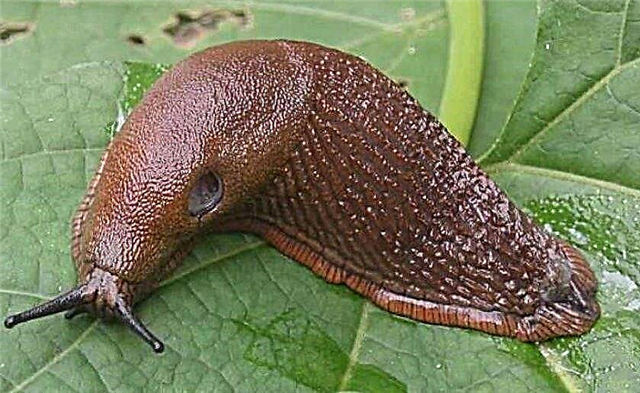
Harvesting and storage
Harvest eggplants harvested in about 25-40 days, after flowering, around August, it all depends on the variety variety. Remove fruits from the bush with a fruit cup and a small part of the stem. You can distinguish ripe vegetables from unripe ones by the characteristic dark violet glossy color.Eggplant must not be overripe: white stripes appear on their surface. The ripened fruits should be cut immediately and due to the fact that they can become the reason why new eggplants do not ripen: ripe fruits will draw strength from the bush.
It is necessary to store the collected eggplants in a dark room, with an air temperature of 7 ° C to 10 ° C and a humidity of 80–90%. Under such conditions, the fruits will retain their freshness and presentation for 30–40 days. You can store the vegetable in a frozen state.Important! After treating the soil or plants against diseases and pests, be sure to sanitize the tools you used.

We can summarize: the cultivation of eggplant, in fact, is not such a difficult task. The main thing is to study the mores of this culture and provide it with proper care.


















